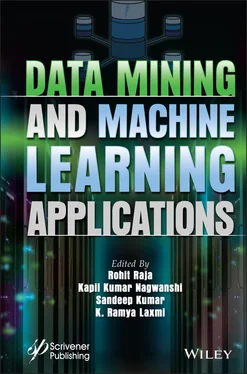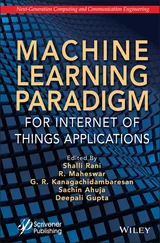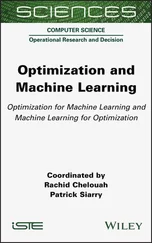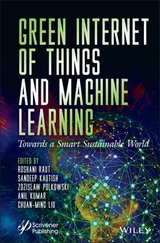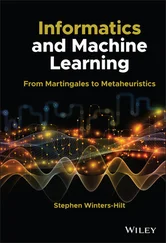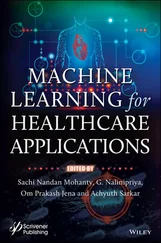Data Mining and Machine Learning Applications
Здесь есть возможность читать онлайн «Data Mining and Machine Learning Applications» — ознакомительный отрывок электронной книги совершенно бесплатно, а после прочтения отрывка купить полную версию. В некоторых случаях можно слушать аудио, скачать через торрент в формате fb2 и присутствует краткое содержание. Жанр: unrecognised, на английском языке. Описание произведения, (предисловие) а так же отзывы посетителей доступны на портале библиотеки ЛибКат.
- Название:Data Mining and Machine Learning Applications
- Автор:
- Жанр:
- Год:неизвестен
- ISBN:нет данных
- Рейтинг книги:3 / 5. Голосов: 1
-
Избранное:Добавить в избранное
- Отзывы:
-
Ваша оценка:
- 60
- 1
- 2
- 3
- 4
- 5
Data Mining and Machine Learning Applications: краткое содержание, описание и аннотация
Предлагаем к чтению аннотацию, описание, краткое содержание или предисловие (зависит от того, что написал сам автор книги «Data Mining and Machine Learning Applications»). Если вы не нашли необходимую информацию о книге — напишите в комментариях, мы постараемся отыскать её.
The book elaborates in detail on the current needs of data mining and machine learning and promotes mutual understanding among research in different disciplines, thus facilitating research development and collaboration.
Audience
Data Mining and Machine Learning Applications — читать онлайн ознакомительный отрывок
Ниже представлен текст книги, разбитый по страницам. Система сохранения места последней прочитанной страницы, позволяет с удобством читать онлайн бесплатно книгу «Data Mining and Machine Learning Applications», без необходимости каждый раз заново искать на чём Вы остановились. Поставьте закладку, и сможете в любой момент перейти на страницу, на которой закончили чтение.
Интервал:
Закладка:
Publishers at Scrivener
Martin Scrivener ( martin@scrivenerpublishing.com) Phillip Carmical ( pcarmical@scrivenerpublishing.com)
Data Mining and Machine Learning Applications
Edited by
Rohit Raja
Kapil Kumar Nagwanshi
Sandeep Kumar
and
K. Ramya Laxmi

This edition first published 2022 by John Wiley & Sons, Inc., 111 River Street, Hoboken, NJ 07030, USA and Scrivener Publishing LLC, 100 Cummings Center, Suite 541J, Beverly, MA 01915, USA
© 2022 Scrivener Publishing LLC
For more information about Scrivener publications please visit www.scrivenerpublishing.com.
All rights reserved. No part of this publication may be reproduced, stored in a retrieval system, or transmitted, in any form or by any means, electronic, mechanical, photocopying, recording, or otherwise, except as permitted by law. Advice on how to obtain permission to reuse material from this title is available at http://www.wiley.com/go/permissions.
Wiley Global Headquarters
111 River Street, Hoboken, NJ 07030, USA
For details of our global editorial offices, customer services, and more information about Wiley products visit us at www.wiley.com.
Limit of Liability/Disclaimer of Warranty
While the publisher and authors have used their best efforts in preparing this work, they make no representations or warranties with respect to the accuracy or completeness of the contents of this work and specifically disclaim all warranties, including without limitation any implied warranties of merchantability or fitness for a particular purpose. No warranty may be created or extended by sales representatives, written sales materials, or promotional statements for this work. The fact that an organization, website, or product is referred to in this work as a citation and/or potential source of further information does not mean that the publisher and authors endorse the information or services the organization, website, or product may provide or recommendations it may make. This work is sold with the understanding that the publisher is not engaged in rendering professional services. The advice and strategies contained herein may not be suitable for your situation. You should consult with a specialist where appropriate. Neither the publisher nor authors shall be liable for any loss of profit or any other commercial damages, including but not limited to special, incidental, consequential, or other damages. Further, readers should be aware that websites listed in this work may have changed or disappeared between when this work was written and when it is read.
Library of Congress Cataloging-in-Publication Data
ISBN 978-1-119-79178-2
Cover image: Pixabay.Com
Cover design by Russell Richardson
Set in size of 11pt and Minion Pro by Manila Typesetting Company, Makati, Philippines
Printed in the USA
10 9 8 7 6 5 4 3 2 1
Preface
Data, the latest currency of today’s world, is the new gold. In this new form of gold, the most beautiful jewels are data analytics and machine learning. Data mining and machine learning are considered interdisciplinary fields. Data mining is a subset of data analytics and machine learning involves the use of algorithms that automatically improve through experience based on data. However, the term data mining is a misnomer because it means to mine but not extract knowledge. A more apt term would be “knowledge discovery from data,” since it is the practice of examining large pre-existing databases to generate information. Data mining algorithms are currently being investigated and applied worldwide.
Massive datasets can be classified and clustered to obtain accurate results. The most common technologies used include classification and clustering methods. Accuracy and error rates are calculated for regression and classification, and clustering to find actual results through algorithms like support vector machines and neural networks with forward and backward propagation. Applications include fraud detection, image processing, medical diagnosis, weather prediction, e-commerce and so forth. Data mining algorithms are even used to analyze data by using sentiment analysis. These applications have been increasing in different areas and fields. Web mining and text mining also paved their way to construct the concrete q2 field in data mining.
This book is intended for industrial and academic researchers, and scientists and engineers in the information technology, data science and machine and deep learning domains. Featured in the book are:
A review of the state-of-the-art in data mining and machine learning,
A review and description of the learning methods in human-computer interaction,
Implementation strategies and future research directions used to meet the design and application requirements of several modern and real-time applications for a long time,
The scope and implementation of a majority of data mining and machine learning strategies, and
A discussion of real-time problems.
This book is a better choice than most other books available on the market because they were published a long time ago, and hence seldom elaborate on the current needs of data mining and machine learning. It is our hope that this book will promote mutual understanding among researchers in different disciplines, and facilitate future research development and collaborations.
We want to express our appreciation to all of the contributing authors who helped us tremendously with their contributions, time, critical thoughts, and suggestions to put together this peer-reviewed edited volume. The editors are also thankful to Scrivener Publishing and its team members for the opportunity to publish this volume. Lastly, we thank our family members for their love, support, encouragement, and patience during the entire period of this work.
Rohit RajaKapil Kumar Nagwanshi Sandeep Kumar K. Ramya LaxmiNovember 2021
1
Introduction to Data Mining
Santosh R. Durugkar1, Rohit Raja2, Kapil Kumar Nagwanshi3* and Sandeep Kumar4
1 Amity University Rajasthan, Jaipur, India
2 IT Department, GGV Bilaspur Central University, Bilaspur, India
3 ASET, Amity University Rajasthan, Jaipur, India
4 Computer Science and Engineering Department, Koneru Lakshmaiah Education Foundation, Vaddeswaram, Andra Pradesh, India
Abstract
Data mining, as its name suggests “mining”, is nothing but extracting the desired, meaningful exact information from the datasets. Its methods and algorithms help researchers and students develop the numerous applications to be used by the end-users. Its presence in the healthcare industry, marketing, scientific applications, etc., enables the end-users to extract the meaningful required information from the collection. In the initial section, we discuss KDD—knowledge discovery in the database with its different phases like data cleaning, data integration, data selection and transformation, representation. In this chapter, we give a brief introduction to data mining. Comparative discussion about classification and clustering helps the end-user to distinguish these techniques. We also discuss its applications, algorithms, etc. An introduction to a basic clustering algorithm, K-means clustering, hierarchical clustering, fuzzy clustering, and density-based clustering, will help the end-user to select a specific algorithm as per the application. In the last section of this chapter, we introduce various data mining tools like Python, Rapid Miner, and KNIME, etc., to the user to extract the required information.
Читать дальшеИнтервал:
Закладка:
Похожие книги на «Data Mining and Machine Learning Applications»
Представляем Вашему вниманию похожие книги на «Data Mining and Machine Learning Applications» списком для выбора. Мы отобрали схожую по названию и смыслу литературу в надежде предоставить читателям больше вариантов отыскать новые, интересные, ещё непрочитанные произведения.
Обсуждение, отзывы о книге «Data Mining and Machine Learning Applications» и просто собственные мнения читателей. Оставьте ваши комментарии, напишите, что Вы думаете о произведении, его смысле или главных героях. Укажите что конкретно понравилось, а что нет, и почему Вы так считаете.
